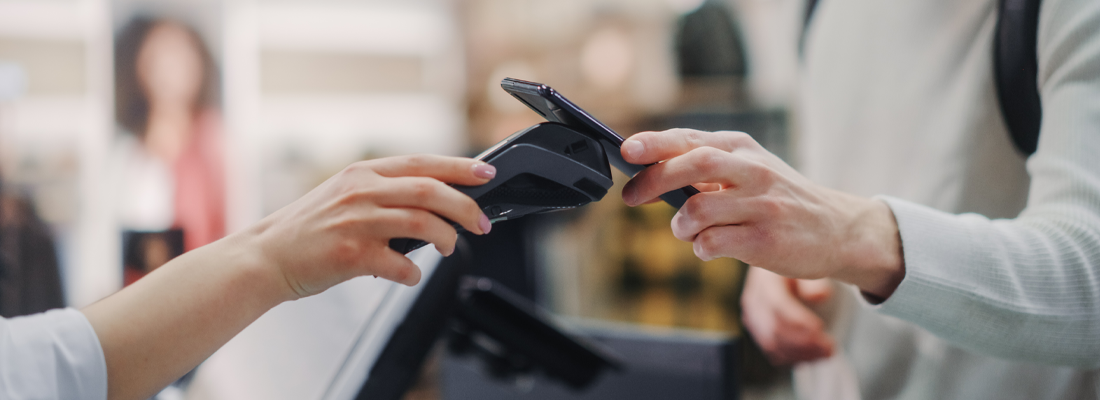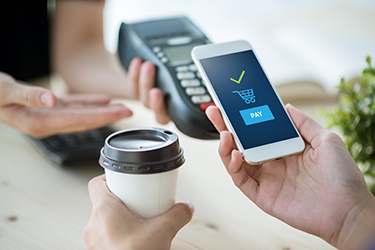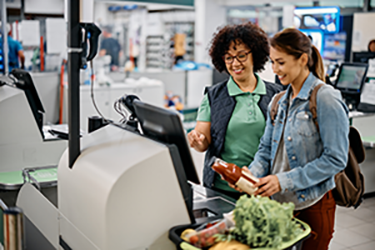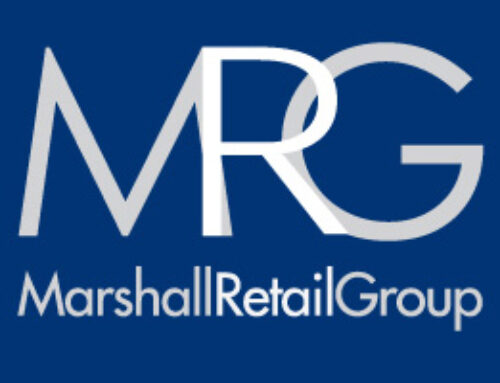11 Factors for Maximizing the Benefits of Mobile POS and Self-Checkout
Kyle Wittet, Vice President, Oracle Retail Practice
The retail industry is facing quite a puzzle: Customers want speed and efficiency, but also personalized service. They want to check out of a store as fast as possible, but also have an associate ready to help them source or ship the perfect item. These expectations aren’t necessarily contradictory, but they do require retailers to be thoughtful and strategic about their technology roadmap.
Digitizing the store
Here at BTM, we are an Oracle Retail technology partner for a variety of retailers: fashion, grocery, and department stores, among others. Many of our clients are considering two paths to digitizing their store experience: Putting mobile devices in the hands of store associates, and/or self-checkout kiosks.
Store team members, equipped with mobile devices, can instantly serve customers in personalized ways, turning a potential shopping frustration (can’t find the right item) into a win (ordering the item from another store and shipping it to their home). Self-checkout, when used correctly (I’ll talk about that later), can significantly reduce wait times and move customers out of the store faster.
Mobile devices and self-checkout are two very different digital store offerings that can serve different but complementary purposes: Mobile devices to enhance customer relationships and self-checkout to drive efficiency and speed.
Let’s take a look at both approaches and important considerations for each.
Mobile devices are more than a transaction
Mobile devices in a retail environment will give you the most ROI when they’re used to build the customer relationships – not simply make a transaction. In fact, I prefer to call it “mobile POS” (point of service) because it’s there to serve the customer.

With a robust mobile POS, a store associate can be on the floor with a customer and help them…
- Find a product
- Check pricing and inventory
- Order and ship an item to the store or the customer’s home
- Look up the customer’s past purchase history
- Assist with product warranty questions
- Offer services and upsell
- If payments are integrated, the customer can checkout anywhere on the floor.
When implemented with service in mind (rather than simply sales) a mobile device facilitates the personalized, touchy-feely part of retail that so many consumers are missing these days.
4 Factors for Mobile POS Implementation
Entrusting store associates with a device is a big step, so it’s important to have a good change management plan and processes in place – especially if payments are involved.
 Mobile devices aren’t just for in-store use, either: Think pop-up stores, community events, or in-home services. With payments enabled, the device releases associates from the cash register and allows them to meet customers wherever they are to help them find the right item and check out.
Mobile devices aren’t just for in-store use, either: Think pop-up stores, community events, or in-home services. With payments enabled, the device releases associates from the cash register and allows them to meet customers wherever they are to help them find the right item and check out.
For example, one of our clients is a commercial pool supply company that has given their field teams mobile devices. The team member can look up an individual or business customer’s account, service their pool accordingly, and then invoice them and accept payment all from the device. If the customer needs cleaning supplies or accessories, the employee can add those to the bill.
Another client is an operator of gift shops at cultural attractions throughout North America. The store associates, equipped with Oracle Retail Xstore POS implemented on mobile devices, are free to walk the store and help customers find what they need while also selling and printing tickets and additional merchandise. In fact, when the devices were used at one of its largest events of the year, the retailer successfully captured several thousand dollars in sales that would’ve potentially been lost or abandoned.
To improve your store experience like these retailers have, consider the following:
- Prioritize change management and the impacts on store associates. For example, how will they service a customer using mobile POS? Will they be able to check-out the customer, or will they need to take their order on the mobile device and check them out at an in-lane register?
- Ensure your store has good connectivity throughout every corner, so a customer interaction is never hindered.
- If the devices don’t sync up in the cloud, have procedures in place for syncing the devices back to base.
- If the employee is outside the store, do you have the infrastructure to support that? How will they connect the tablet back to home base? How soon are they expected to sync it? What happens if they bring the tablet home at night and the sales aren’t synced until the next morning?
Self-checkout is about speed
Self-checkout kiosks are primarily about getting customers out of the store in the most efficient way, and they pair nicely with the relationship-building features of a mobile POS.
 At a time when retail employees are hard to come by, self-checkout frees up team members to be on the floor with the customer. Or, at the very least, it reduces the number of cashiers per register, as self-checkout typically has several kiosks staffed by a single person to help with questions and issues.
At a time when retail employees are hard to come by, self-checkout frees up team members to be on the floor with the customer. Or, at the very least, it reduces the number of cashiers per register, as self-checkout typically has several kiosks staffed by a single person to help with questions and issues.
By and large, retail customers love self-checkout. According to PYMNTS’ Retail Tracker series, “Innovating the Retail Checkout Experience,” 60% of customers would rather do self-checkout than interact with a cashier. Retailers are responding; Grocery Dive notes that self-checkout lanes now make up 38% of all checkout lanes in the U.S.
5 Factors for Maximizing the Benefits of Self-Checkout (hint: it’s not for everyone)
Self-checkout isn’t for every retailer or every transaction. To be honest, I cringe when I see a customer with 50 items in the self-checkout lane because that’s not its intended use (I also recognize that stores are short-staffed and, in certain cases, may want everyone to use self-checkout).
Here are some things to consider when deciding whether to implement self-checkout in your store.
- Do your customers often purchase just a few items? For example, one of our clients is an airport and casino retailer that offers products like bottled water, snacks and magazines. The typical customer only buys a few things, so self-checkout makes perfect sense in that environment.
- If your average customer fills their cart, do you have proper processes in place to direct them to a traditional self-checkout lane? This will maximize speed, service, and convenience for everyone
- Does self-checkout fit with your brand? Notably, Trader Joe’s has made a point of not installing self-checkout lanes because they want to preserve customer interactions. This is a good example of a retailer thoughtfully considering whether certain digital changes are truly right for them.
- Self-checkout kiosks can be disruptive to implement: Make sure you have the space for the lanes, proper security in place, the technological and electrical infrastructure, and that self-checkout won’t disrupt the overall flow of foot traffic.
- What merchandise will not be eligible to go through these lanes? How will this be communicated to customers in advance to relieve potential customer frustration? Will store associates be made aware of what can and cannot be purchased in the self-checkout lanes?
Now’s the Time
If mobile POS and/or self-checkout make sense for your business, now’s the time to move on it. Oracle Retail Xstore POS is an excellent solution for mobile POS; it has robust capabilities and the extendibility to serve customers in store and service online customers in the store, such as pulling in-cart merchandise and adding the items to an in-store sale.
BTM Global offers an Xstore accelerator program that gets you up and running with mobile POS quickly and with less cost than a traditional upgrade. Learn about our Xstore Mobile Accelerator offering.
We also partner with customers on self-checkout implementations, counseling them on the technology and integrations needed to be successful. You can read one of our customer stories here.







